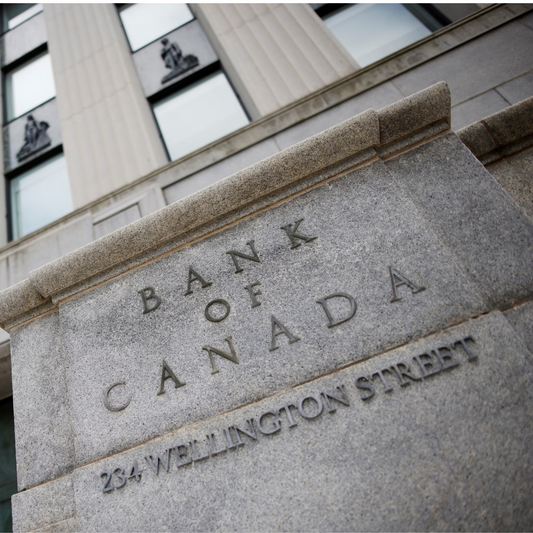The Last Rate Decision of 2024: A Quick Fix or ….
- February 6, 2025
- Posted by: Michael
- Category: Uncategorized

Before Canadians ring in 2025, the Bank of Canada (BoC) is set to make its final call of the year, a decision expected to lower the overnight interest rate by 50 basis points to 3.25%. While most major banks are on board with this prediction, some dissenters, like TD (surprise), suggest a smaller cut of 25 basis points. But as we dig deeper, it’s worth asking: Is this rate cut a necessary adjustment or a move that could have unintended consequences?
The Bigger Picture: Why It Matters
The decision to slash interest rates isn’t made in a vacuum. Economic indicators like GDP growth falling short of expectations and unemployment reaching a seven-year high (outside of the pandemic) have pushed policymakers toward aggressive action. Yet, this decision comes with trade offs:
- A Weaker Dollar: Lower interest rates could further devalue the Canadian dollar, already struggling against the U.S. dollar. This disparity might soon worsen under new U.S. tariffs, raising the cost of imported goods like food.
- Inflation Risks: While inflation is currently within the BoC’s 2% target range, core inflation remains volatile, and higher retail spending could reignite price increases, undermining the stability that rate cuts aim to achieve.
A Quick Fix or a Systemic Concern?
For some, a 50-basis point cut might provide short-term relief by making borrowing cheaper, encouraging consumer spending, and helping businesses. But for others, it raises a critical question: Are we addressing the symptoms of economic strain without tackling the root causes?
Key challenges remain:
- Persistent income inequality
- Rising costs of living
- Weak export competitiveness tied to a declining dollar
A significant rate cut might ease immediate pressures, but without structural reforms, its long-term benefits are less certain.
Rethinking the Path Forward
Instead of relying on rate cuts as a primary tool, what if we focused on creating a more resilient economy? Strategies like diversifying exports, improving workforce skills, and fostering innovation could reduce reliance on monetary policy to keep the economy afloat.
Imagine a Canada where economic stability doesn’t hinge on volatile rate adjustments but on a foundation of sustainable growth.
Build a Stronger Financial Future With a Free Financial Needs Analysis
While the Bank of Canada’s decisions impact the economy as a whole, your personal finances require a strategy that’s built around you. That’s why I’m offering every Canadian family a Free Financial Needs Analysis (FNA) to help navigate these uncertain times.
The FNA is a personalized roadmap designed to:
- Eliminate debt efficiently
- Plan for your children’s future, including education savings
- Protect your income and secure your retirement
- Grow your savings with smart investment strategies
In times of economic uncertainty, understanding your financial picture can make all the difference. Together, we can ensure your family’s financial stability isn’t just a reaction to rate cuts or economic shifts, it’s a plan for long-term security and peace of mind.
Let’s Get Started
This isn’t just about navigating the BoC’s decisions. It’s about empowering every Canadian to build real wealth and thrive, no matter the economic conditions. Reach out today to book your free Financial Needs Analysis and take the first step toward a stronger financial future.
– Michael Knapp
Helping Canadians Build Real Wealth

